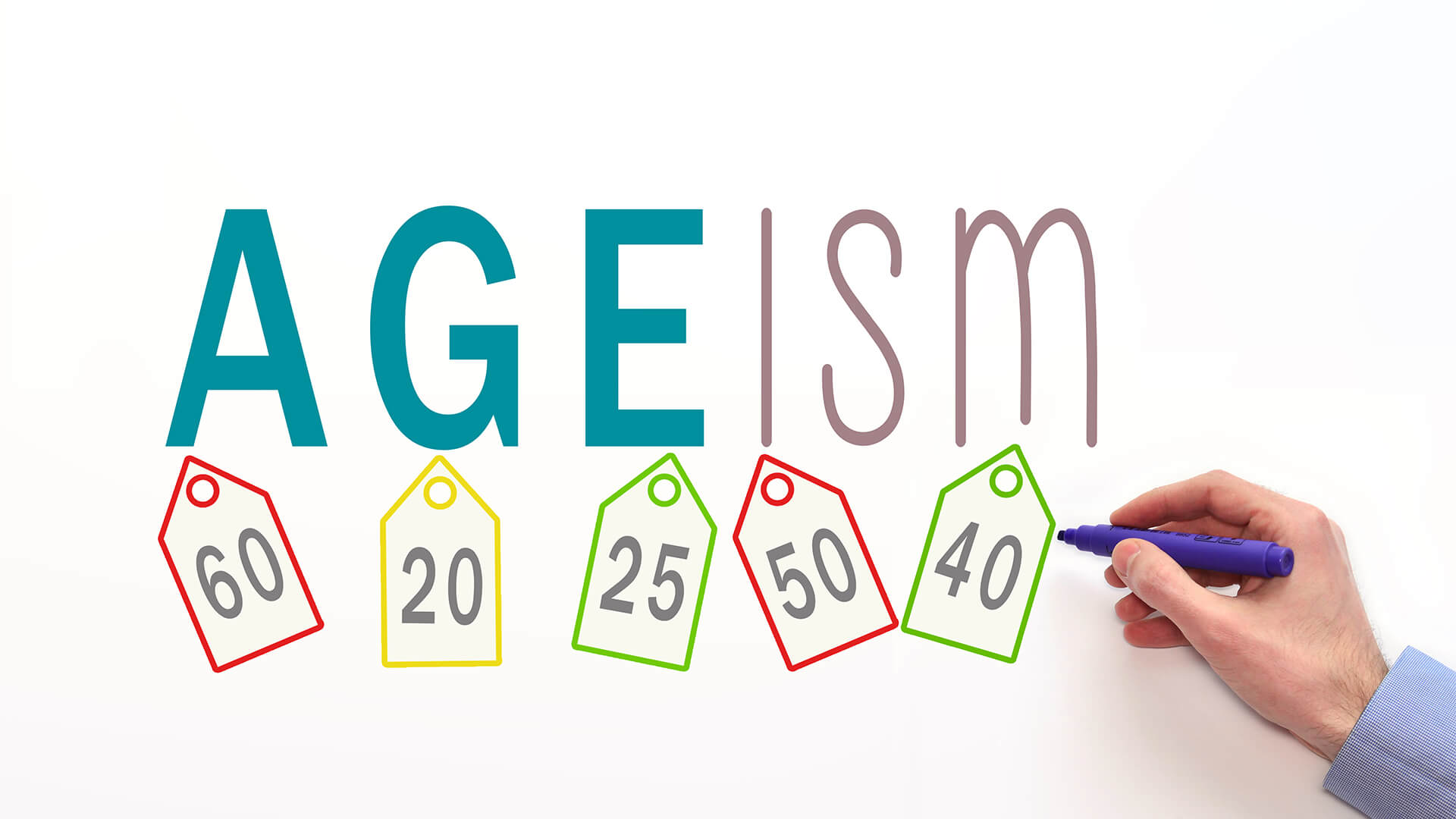Ageism in the Workplace Spikes Due to Covid-19
By Thom Dennis, CEO at Serenity in Leadership
As lockdown restrictions are now easing and many businesses may be choosing to ease back into office life, D&I experts are increasingly concerned about how age discrimination has been exacerbated due to the pandemic. Affecting both personal career trajectory and mobility, as well as stagnating the workplace, many fear that ageism is only set to get worse with more than one million people over the age of 50 still on furlough, which is due to end in late September.
The pandemic has already cruelly affected different age groups in the workplace. There has been a spike in age-related unemployment; research by Rest Less found the number of over-50s made redundant almost tripled to 107,000 between last November and January 2021. A survey earlier this year by workingwise.co.uk found 44% had experienced age discrimination at work and 48% during the recruitment process. 40% felt they were side-lined or left out of discussions at work and 24% said they had experienced discrimination when it comes to promotion.
Older workers (specifically those over the age of 70) are considered at higher-risk to Covid-19 and suffered accordingly. Employers have been using Covid-19 to make older workers redundant and they have then found themselves disadvantaged when looking for new work. Employers have also kept more expensive older workers on furlough for longer and brought younger employees back sooner. Many workers have revaluated their skill set and are looking for a career change, again harder to do when you are older.
Many women who suffered from burnout during the pandemic already experience ageism as young as 40 because employers assume that they have less ambition and energy than their younger colleagues. Attitudes to menopause are largely based around avoidance; most male leaders have little or no understanding of this phase in every woman’s life and associate it with a mindset of the end of a woman’s ability to contribute. Younger workers eagerly trying to get a foot on the job ladder have struggled to find jobs or have been left to work isolated at home, unable to learn from being around co-workers.
SO WHAT ARE SOME OF THE OBVIOUS SIGNS OF AGEISM AT WORK?
Opportunities for training or more exciting projects may be offered solely to younger colleagues. Age-related comments or jokes made about colleagues are commonplace. Many older workers are actively excluded from meetings or activities and overlooked for pay rises or promotions. A common assumption is that an older colleague won’t be tech-savvy and find it harder to learn new skills and are counting down the days to retirement. Equally ageism can go the other way and assumptions are made that younger workers are lazy, ignorant and entitled. Some younger colleagues aren’t given time off during the Christmas and summer holidays because they don’t have young children at home.
So what can we do to tackle ageism?
HOW TO COMBAT AGEISM IN THE WORKPLACE:-
1. RECOGNISE STEREOTYPING & GET RID OF IT THROUGH TRAINING. Stereotypes affect inclusivity, diversity, motivation and productivity and can also make your company open to legal challenges. Age is not a factor that determines capability. Training is the key to all aspects of diversity and inclusivity, including ageism, but leaders must be on board and training requires participation from all employees, including management and stakeholders.
As we have found with race awareness, unconscious bias and ethics training, so with ageism: using a tick-in-the-box approach with compulsory one-time or annual short immersions has little or no positive effect and often produces the absolute reverse effect of what was hoped for.
2. HAVE A DETAILED AGEISM POLICY & IMPLEMENT IT. This should include a clear definition of ageism, examples, reporting procedures and grievance procedures. Staff should be cognisant of any form of age discrimination at work and be aware of what to do if they are either a witness or subjected to it. Check all recruitment policies, employment terms and conditions training, training, promotions and dismissal policies and identify and rectify any areas of age bias. Check your policies with a wide spectrum of your workforce so you surface bias in their construction.
3. REVIEW THE RECRUITMENT PROCESS. Avoid words like ‘energetic’, or ‘tech savvy’ to describe the ideal candidate. Focus on general words which convey a candidate’s work ethic such as ‘passionate’, ‘dedicated’ or ‘proactive’. Consider the information you collect from applicants and evaluate whether all of this information is truly necessary. For instance, do you really need to know the year an applicant finished secondary school, or would this information pander to unconscious bias?
4. VALUE LOYALTY & SKILLS. Research shows us that 45 – 54-year-old employees remain at the job twice as long as their 25 – 34-year-old counterparts; and 67% of workers aged 40 – 65 want to keep working after 66. Creating the right environment and opportunities drives loyalty. Encourage managers to value skills and how they match the role, not age. There is much wisdom that comes with the experience of life, wisdom that adds pragmatism, realism as well as creativity and healthy challenge.
5. ENSURE FAIR OPPORTUNITIES & PROMOTIONS – Make sure there is a personal development plan for all employees to maximise their potential and opportunities by recognising abilities regardless of age. Hiscox found that 51 years old is the age most workers believe they are likely to experience workplace discrimination.
6. ENCOURAGE A COLLABORATIVE WORKPLACE CULTURE between staff members of different ages to develop inclusivity and strengthen bonds between all age groups. Having a mentoring programme in the workplace can benefit all generations, as can pairing two colleagues of different ages to work on tasks together to boost integration, creativity and productivity.
7. WATCH FOR BIAS-LED, UNACCEPTABLE SOCIAL CUES such as jokes about age. What seems like banter can lead to isolation, poor mental health and grounds for age discrimination lawsuits.
8. CHOOSE AGE INCLUSIVE COMPANY SOCIAL ACTIVITIES – Ensure all meetings and company social activities are fully inclusive and encourage all to attend.
9. CREATE AN OPEN-DOOR POLICY – Having a safe space work environment where employees can voice their concerns about ageism in the workplace creates positive communication.
10. CHECK YOUR COMPANY COLLATERAL AND VISUAL DISPLAYS. Displaying pictures of all age ranges, such as ‘about us’ on your website can attract both new talent and customers who may have been put off otherwise to help break down the barriers that sometimes form inadvertently or overtly.
11. BE AN AGENT OF CHANGE AND USE YOUR VOICE. Role model the right behaviours and call out the wrong ones. Encourage individual responsibility and a speak-out workplace culture. Make sure you check once in a while that you yourself are not falling down the pitfalls of reinforcing stereotypes.
12. ENCOURAGE DIVERSITY. Not only is maintaining a diverse team fair and the right thing to do, but hiring people from all ages, as well as races, religions, genders and backgrounds is proven to improve productivity, cohesion, creativity and team focus.
As the demographics of societies across the world shift with birth-rates falling and people living longer, ageism becomes increasingly damaging. Companies that embrace the reality of these social trends will benefit from the advantages that a truly diverse and inclusive workforce offers.

Stay updated with our latest publications.
Discover Issues
See how we can help you grow in the online space!
Advertise With Us
We can help promote your business.
Find Out More




